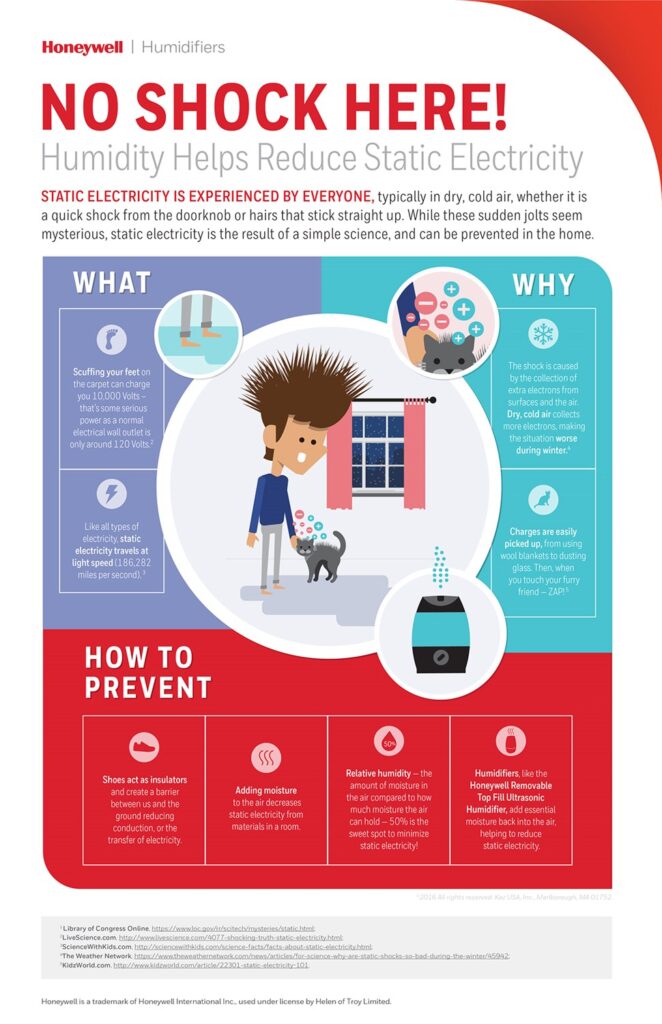
Experiencing excessive static electricity in house can be a real nuisance. Those sudden, jolting shocks can be startling and uncomfortable, especially during the dry winter months. But don’t worry, understanding the causes of static buildup is the first step to effectively combating it. This article will delve into the common culprits behind those pesky static shocks and provide you with practical solutions to minimize their occurrence in your home.
From identifying the root causes to implementing simple yet effective remedies, we’ll equip you with the knowledge and tools to create a more comfortable and static-free living environment. Let’s explore the science behind static electricity and discover how to tame it once and for all.
Causes of Static Electricity
Static electricity arises from an imbalance of electrical charges within or on the surface of materials. When two objects rub together, electrons can transfer from one to the other, leaving one object positively charged and the other negatively charged. This separation of charges creates an electric potential difference, which results in a static discharge when the objects come into contact or are close enough for the charges to neutralize.
Several factors contribute to excessive static electricity in house. The most common culprits include dry air, certain flooring materials, and synthetic fabrics. Understanding these causes is crucial for implementing effective solutions to minimize static buildup.
Dry Air and Static Buildup
Dry air plays a significant role in exacerbating static electricity problems. When the air lacks moisture, it becomes less conductive, making it easier for static charges to accumulate on surfaces. This is particularly prevalent during winter months when indoor heating systems tend to dry out the air.
As humidity levels drop, the air’s ability to dissipate electrical charges diminishes, leading to a greater likelihood of static shocks. Dry skin also contributes to the problem, as it tends to hold onto static charges more readily.
Combatting Dry Air
Fortunately, there are several ways to combat dry air and reduce static buildup:
- Use a humidifier: Adding moisture to the air can significantly decrease static electricity. Consider investing in a humidifier for your home, especially during the winter months.
- Run a hot shower or bath: The steam from a hot shower or bath can temporarily increase humidity levels in your bathroom and surrounding areas.
- Place bowls of water around your home: This simple trick can help add some moisture to the air.
Flooring Materials and Static Shocks
Certain flooring materials are more prone to generating static electricity than others. Hard, smooth surfaces like hardwood floors, tile, and linoleum tend to accumulate charges more easily. This is because these materials lack the ability to dissipate electrical charges effectively.
Walking barefoot on these types of floors can result in a noticeable buildup of static electricity, leading to shocks when you touch another object or person.
Choosing Anti-Static Flooring
If you have hard flooring surfaces that contribute to excessive static electricity in house, consider these options:
- Area rugs: Placing area rugs over hard floors can help reduce static buildup by providing a more conductive surface. Choose rugs made from natural fibers like wool or cotton, which are less likely to generate static charges.
- Anti-static mats: These specialized mats can be placed in areas prone to static shocks, such as near electronic equipment or workstations.
Synthetic Fabrics and Static Charge
Synthetic fabrics, such as polyester, nylon, and acrylic, are notorious for generating static electricity. This is because these materials tend to have a lower moisture content than natural fibers, making them more susceptible to charge buildup.
Wearing synthetic clothing can lead to annoying shocks when you touch objects or other people. The friction generated during movement further exacerbates the problem.
Reducing Static from Synthetic Fabrics
Here are some tips for minimizing static electricity from synthetic fabrics:
- Choose natural fibers: Opt for clothing made from natural fibers like cotton, linen, or wool whenever possible. These materials are less likely to generate static charges.
- Use a fabric softener: Adding a fabric softener to your laundry routine can help reduce static cling in synthetic fabrics.
- Humidify your home: As mentioned earlier, increasing humidity levels can help minimize static buildup in clothing and other surfaces.
Solutions to Reduce Static Electricity
Fortunately, there are numerous effective solutions to combat excessive static electricity in house. Implementing these strategies can significantly reduce the frequency and intensity of those annoying shocks.
Grounding Yourself Regularly
One simple yet effective way to reduce static buildup is to ground yourself regularly. Touching a metal object, such as a doorknob or light switch, can help discharge any accumulated static charges.
Anti-Static Sprays and Products
Anti-static sprays and products are designed to neutralize static charges on surfaces and fabrics. These solutions typically contain ingredients that attract moisture, helping to dissipate electrical charges.
Using Humidifiers
As discussed earlier, dry air contributes significantly to static electricity problems. Using a humidifier can effectively increase humidity levels in your home, reducing the likelihood of static shocks.
Conclusion
Excessive static electricity in house is a common problem that can be easily addressed with the right knowledge and solutions. By understanding the causes of static buildup, such as dry air, certain flooring materials, and synthetic fabrics, you can implement effective strategies to minimize its occurrence.
From using humidifiers and grounding yourself regularly to choosing anti-static products and opting for natural fibers, there are numerous practical steps you can take to create a more comfortable and static-free living environment. Remember, a little effort can go a long way in taming those pesky static shocks and enjoying a more pleasant home experience.
